Pasta alla Gricia is a Roman recipe of very ancient origins. In fact, according to food historians, this recipe was invented around 400 AD and was a typical dish served in the taverns of Ancient Rome. It’s also often referred to as white Amatriciana!
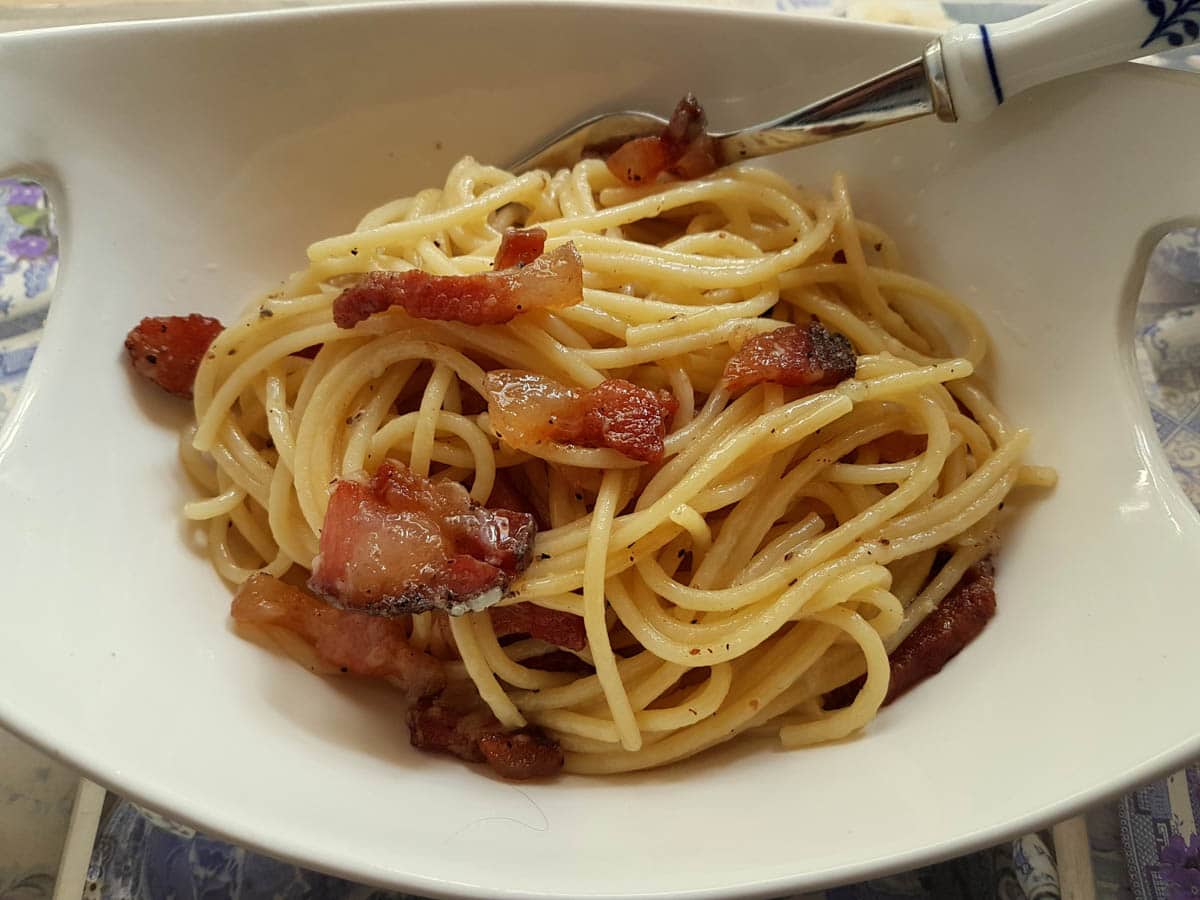
When in Rome, the four pasta dishes that you are most likely to find in any trattoria or osteria (tavern) are Carbonara, Cacio e Pepe, Amatriciana and alla Gricia. Interestingly, the first 3 have become very well-known and popular in other countries too. The last recipe, pasta alla Gricia, has somehow escaped the culinary limelight.
This is surprising given it’s actually the oldest of these Roman pasta recipes and considered to be the original recipe from which the other 3 recipes developed. Think about it! Add some eggs to this dish and you have a carbonara. Add tomatoes and you have amatriciana. Take away the guanciale and it becomes cacio e pepe!
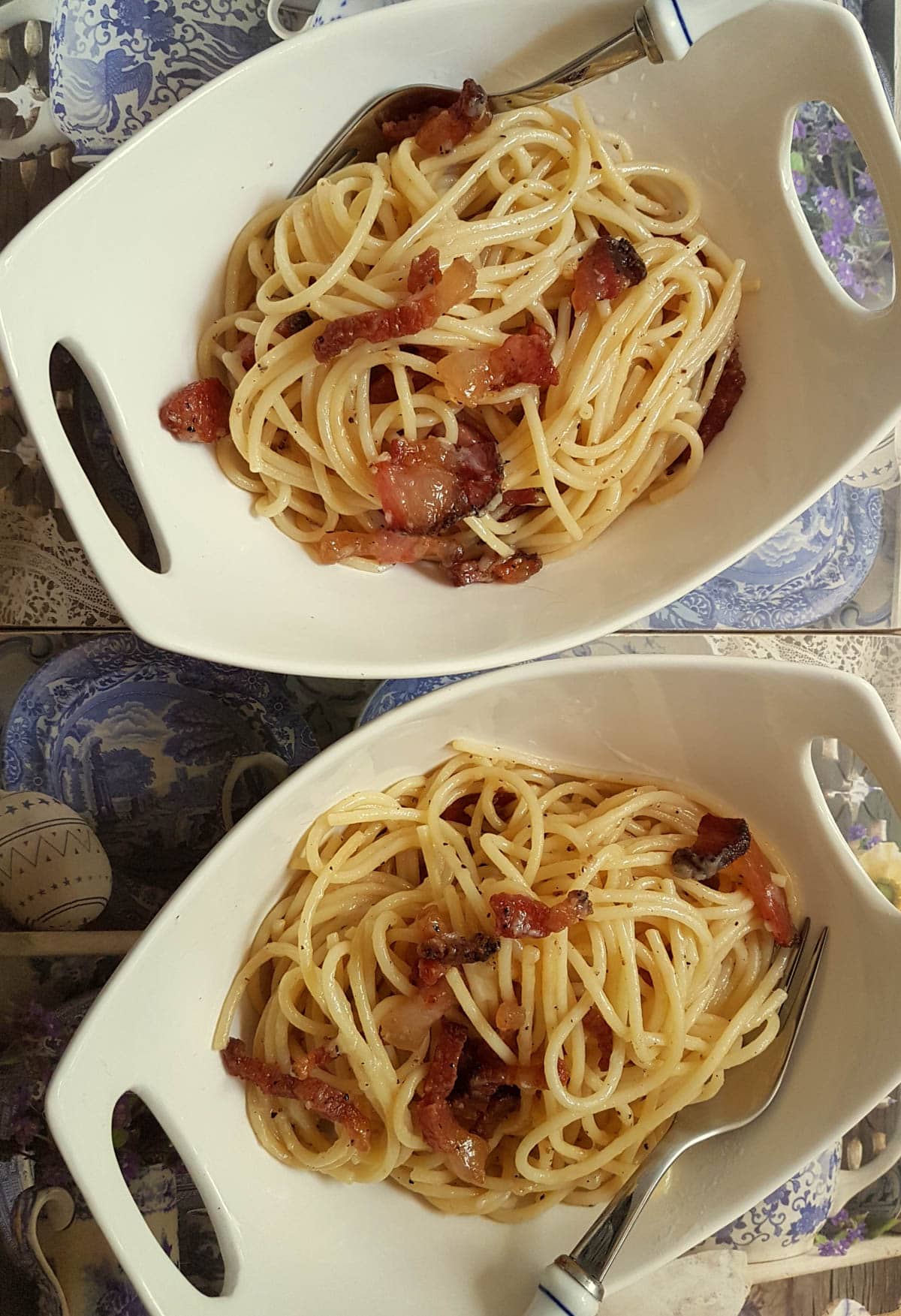
History
Like other classical Italian recipes, the exact origins alla gricia are uncertain. Some believe that the recipe originally came from a town called Griciano, from where its popularity spread to Rome and the rest of Lazio.
Many think that this dish started as a meal eaten by the shepherds of the area as it was made from pasta, cheese and cured pork. These were all things that the shepherds could carry around with them for days as they grazed their sheep.
Interestingly, Griciano is not far from Amatrice, another town that has become well-known for its much-loved pasta recipe invention, l’Amatriciana. However, pasta alla gricia pre-dates l’Amatriciana by centuries because tomatoes weren’t used in the Italian kitchen until 1800s.
Invented by bakers!
Another theory on the origins of pasta alla gricia is that this dish was invented by bakers who came from Germany or Switzerland, especially from the canton of Grisons. The Romans called these people ‘grigioni’. The grigioni were specialized in bread-making. In fact, they were the only bakers in Rome to be called ‘maestri dell’arte bianca’ (white art masters).
Food legend says that the Grigioni spent most of their time in the shops where they worked, ate and slept. Over time, they are believed to have turned to pork curing. And, one of the meals that they prepared was ‘alla gricia’.
Ingredients
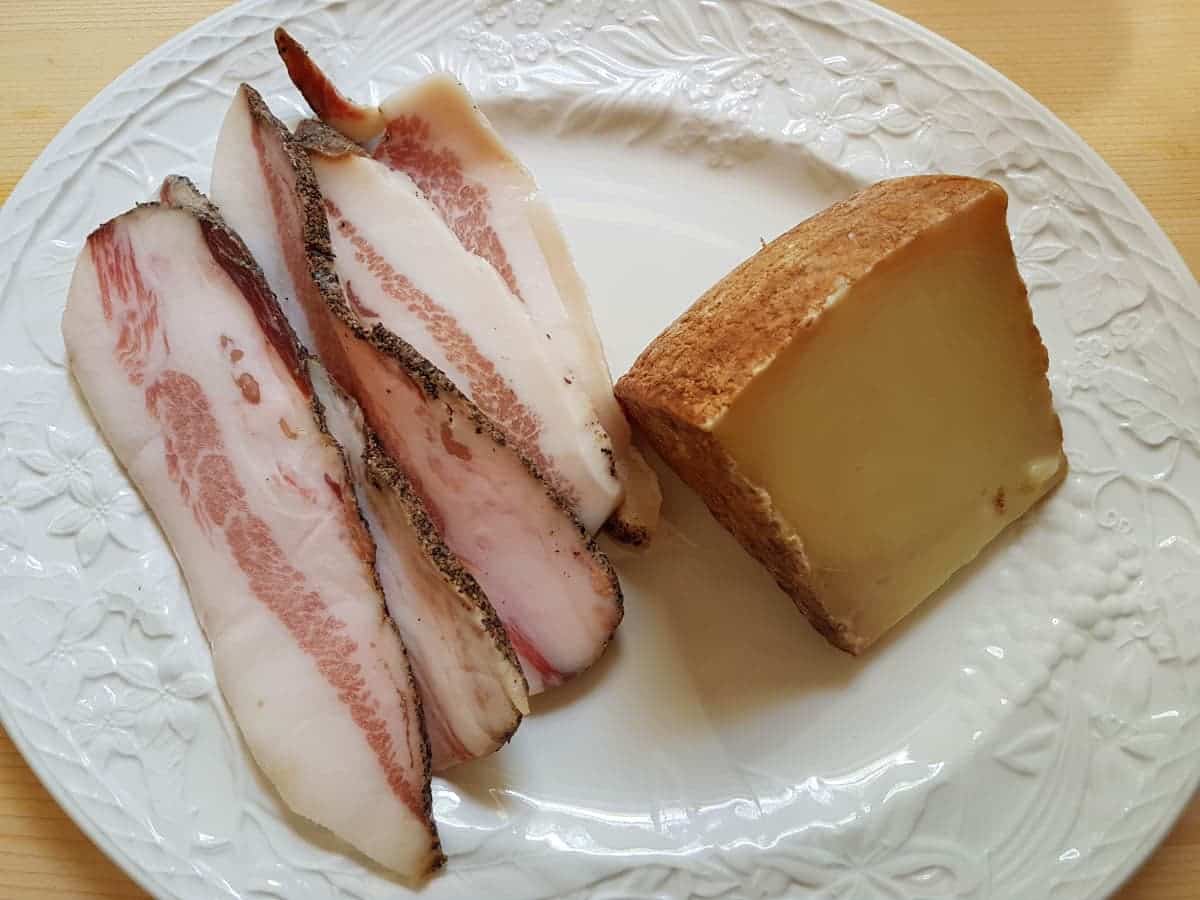
The most important step to cooking an authentic Roman pasta alla gricia is using the right ingredients, of which there are very few. In fact, apart from guanciale (cured pig cheek/jowl) and Pecorino Romano this recipe only needs spaghetti (or rigatoni) and black pepper. Yes that’s it!
The thing that makes pasta alla Gricia special is the guanciale. Traditionally, this is rubbed with salt, pepper and spices and then hung for at least three weeks before being sold. It has a stronger taste than pancetta. It’s also quite fatty and its rendered fat is what flavors this dish.
In fact, guanciale rather than pancetta is the preferred ingredient for both Amatriciana and Carbonara too. In pasta alla gricia, it really is the star ingredient.
Despite the simplicity of the ingredients, pasta alla Gricia is super tasty. Of course, you could use Parmigiano and pancetta instead. But, it won’t taste the same! Guanciale has a unique, intense flavor, and Pecorino adds a slightly salty, sharp back note. The combination of these two flavours are what make this dish.
Alternative recipes
Some Italians make pasta alla Gricia with a little peperoncino (red chili pepper). But, since chili peppers came to Italy from South America with the Spanish explorers (like tomatoes), peperoncino isn’t in the original recipe. Nor are onions, garlic or any herbs.
Before being tempted to add any other ingredients, I would suggest trying this recipe with just the authentic ingredients. I'm sure that you'll love it as much as the Romans do!
Step by Step Instructions
1. Preheat a frying pan or iron skillet, then add the extra virgin olive oil and guanciale.
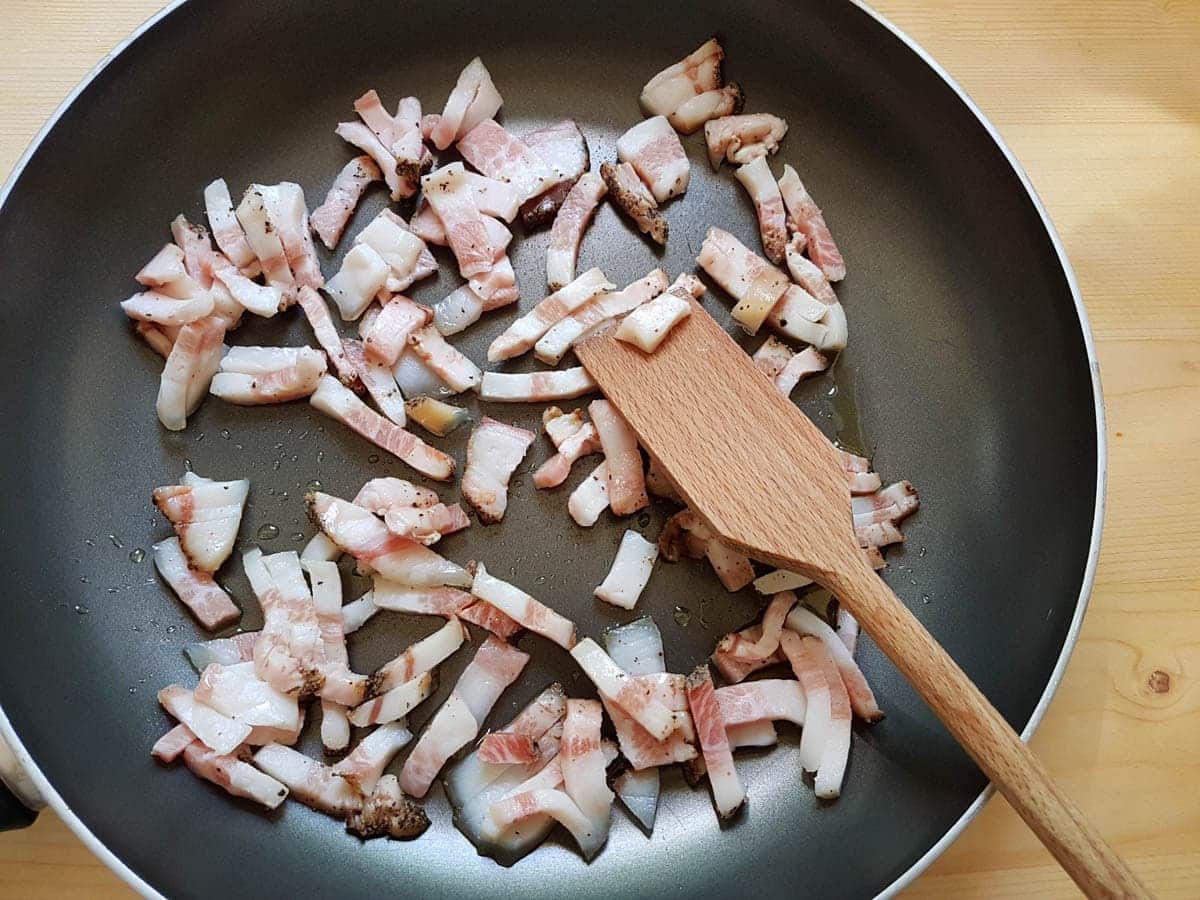
2) Fry the strips of guanciale in the skillet until they're crisp and golden.
Preference: The level of crispiness is up to personal preference; some prefer the fat to remain soft I prefer it crispy.
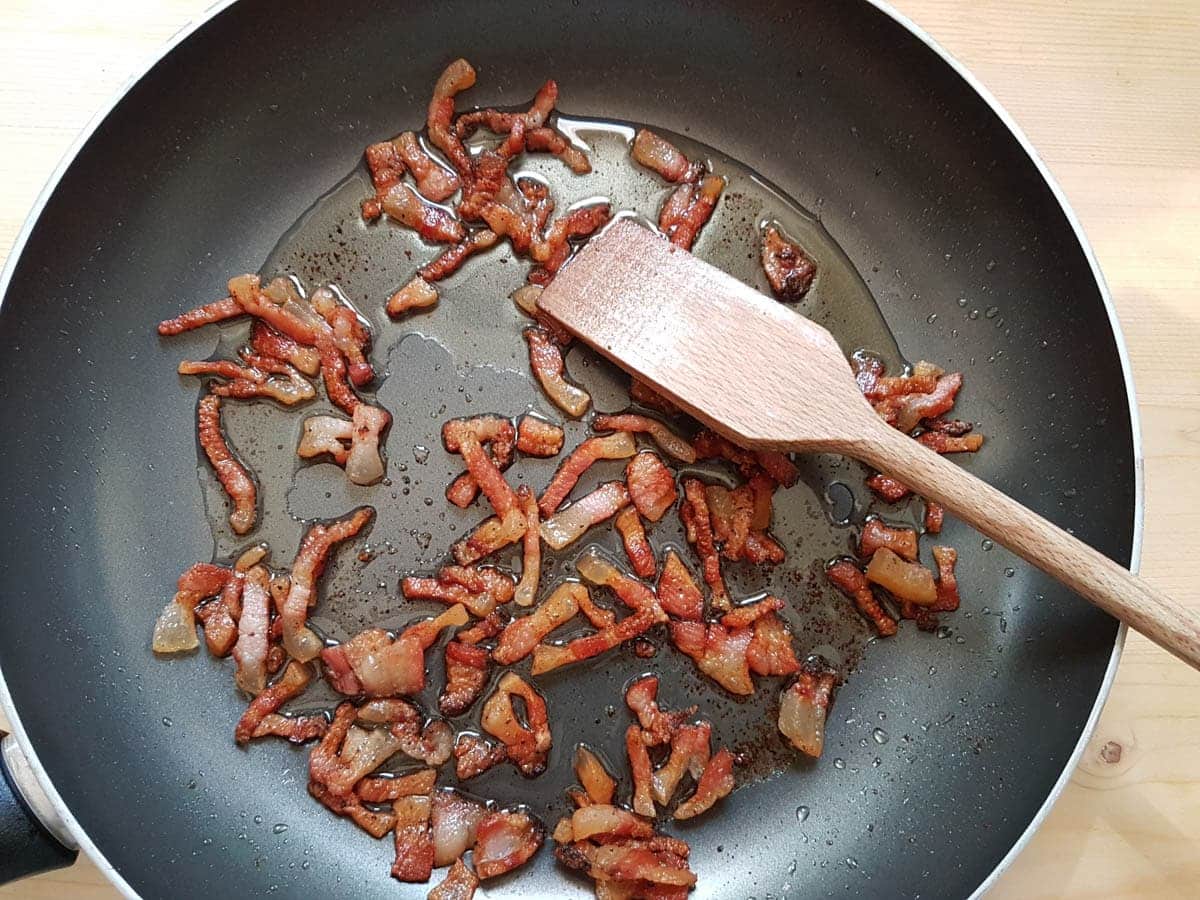
3) As the guanciale cooks, fill a separate pot with water and place it over high heat for the pasta. Once it starts to boil, add salt, then let the water return to a boil. Cook the pasta in the boiling salted water until it's al dente, following the package instructions for timing. Before draining the pasta, set aside a cup of the pasta water for later use.
4) Stir in about a ⅓ cup of the reserved pasta water into the skillet with the guanciale, mixing until it's combined. This starchy water will combine with the rendered fat from the guanciale to form a 'sauce'.
5) Lower the heat on the skillet, then add the cooked pasta to the skillet with the guanciale.
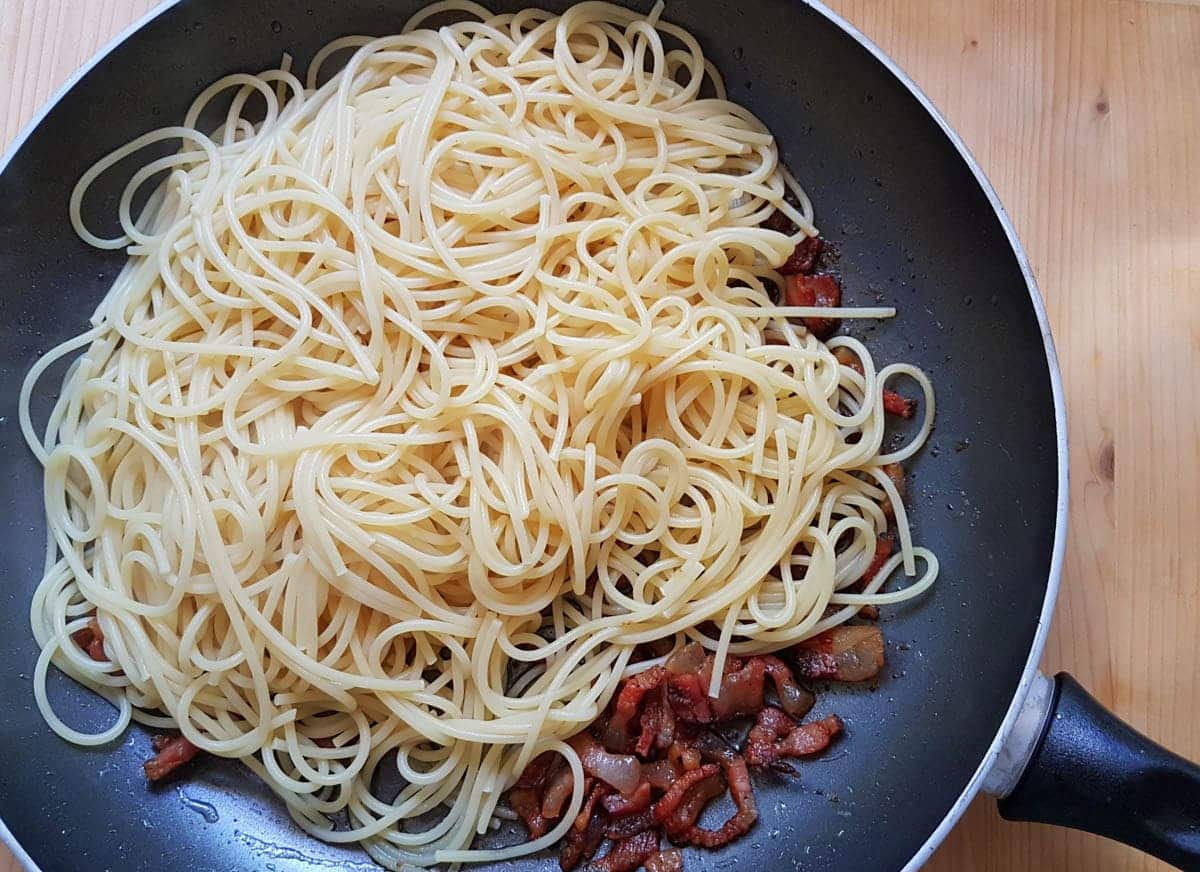
6) Stir the pasta to ensure it's well incorporated with the sauce. If the sauce appears too dry, add a splash of the reserved pasta water to thin it out. If the sauce is too thin, allow it to reduce on the stove for a minute or so.
Note: The sauce will thicken slightly in the next step when the Pecorino cheese is added.
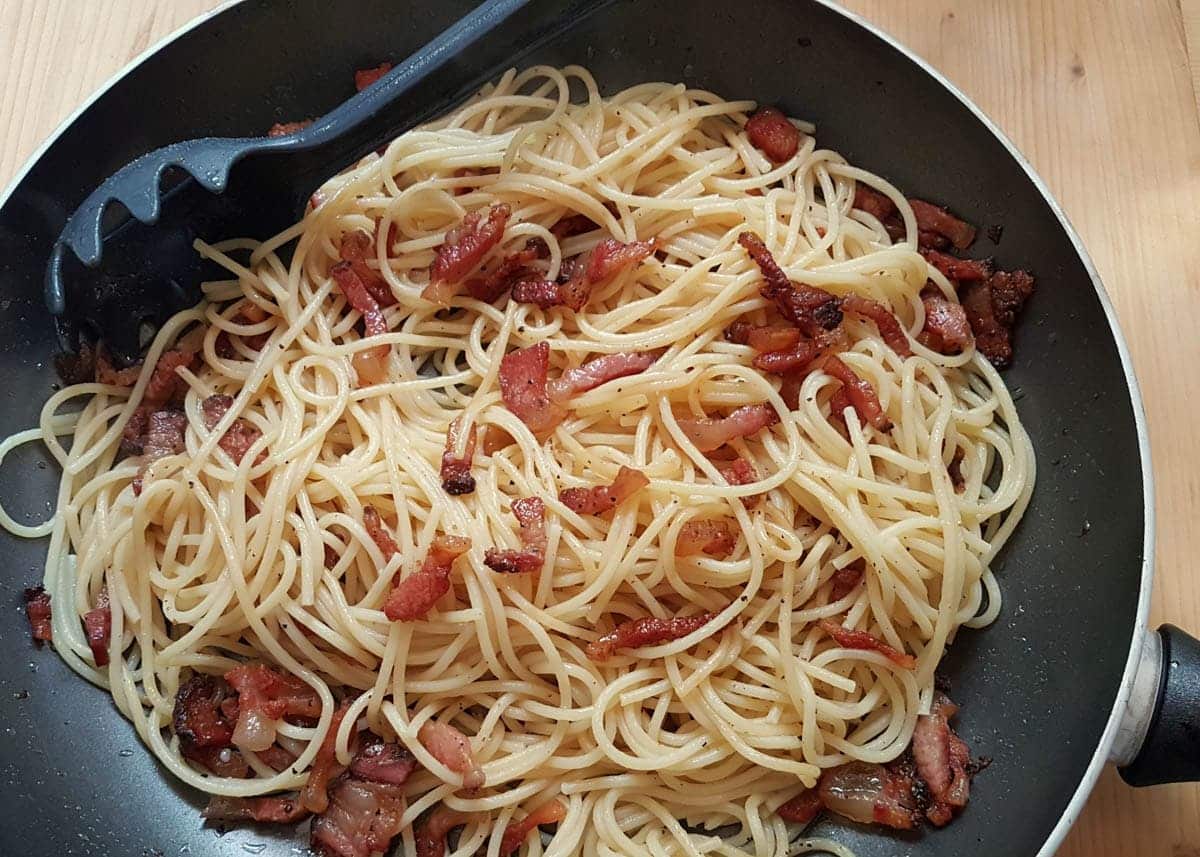
7) Remove the skillet from the heat, add half of the grated Pecorino cheese and some ground black pepper. Stir well to combine.
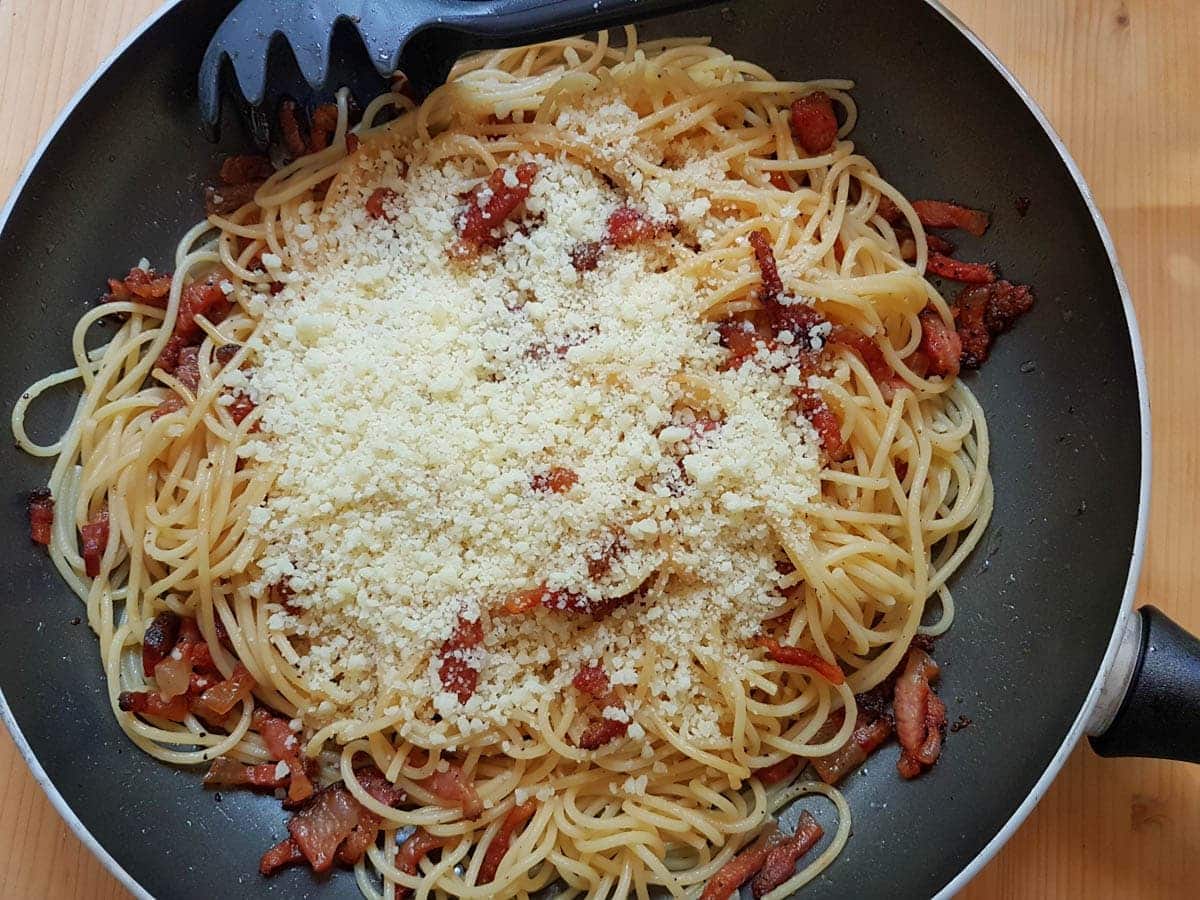
8) Serve the pasta immediately, with a final sprinkling of the remaining grated Pecorino cheese on top.
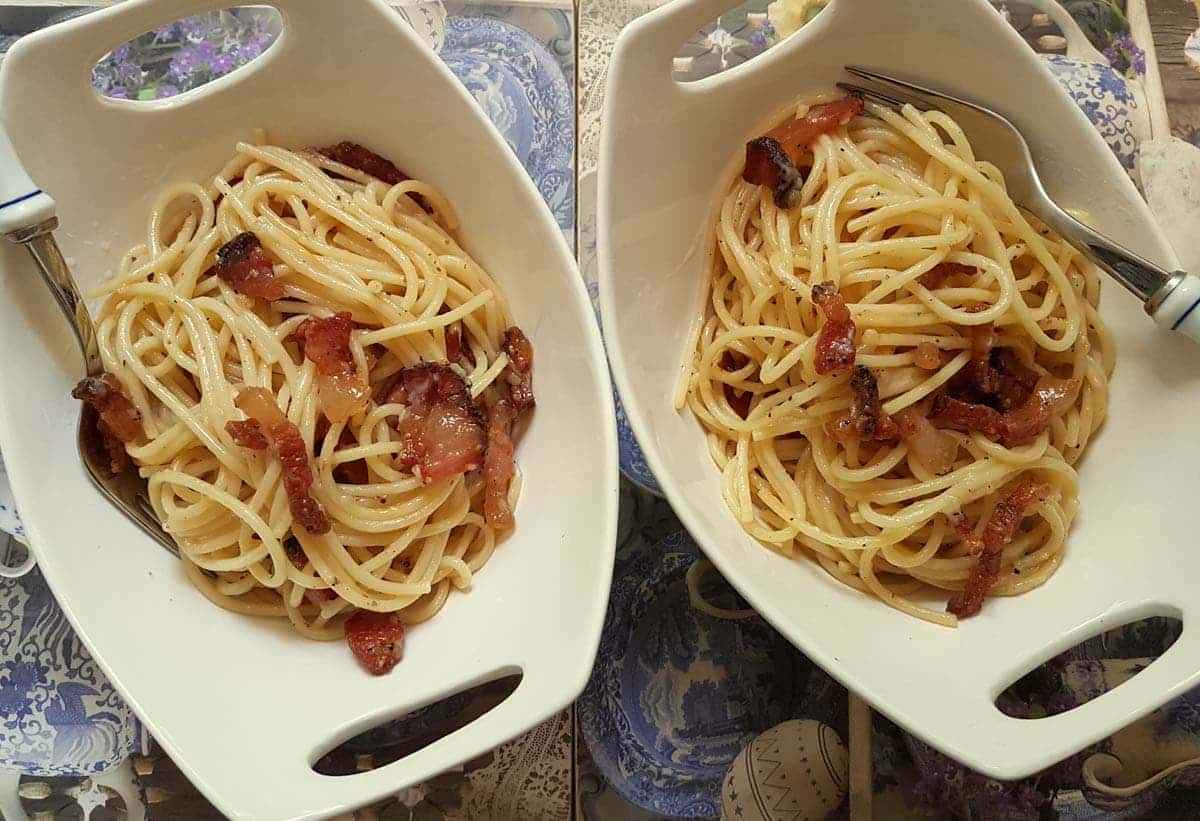
Storage and Leftover Notes
Pasta alla Gricia is best enjoyed right after it's made, but if needed, it can be prepared ahead of time or saved as leftovers. When stored in an airtight container, it can be kept in the refrigerator for up to 3 days. When you're ready to savor the dish, simply reheat the pasta, covered, in the microwave until it's hot throughout.
FAQs
While guanciale is traditional and provides a specific flavor, you can substitute it with pancetta or a good quality bacon. However, this will alter the authentic taste of the dish.
Pecorino Romano is traditional in this dish and adds a unique sharp and tangy flavor, but you could substitute with another hard, aged cheese like Parmigano Reggiano.
Traditional Pasta alla Gricia is made with only a few ingredients to let their flavors shine. That said, some people do enjoy adding ingredients like onions or garlic for additional flavors, though this isn't traditional. I always recommend trying to the traditional version first!
Typically, spaghetti or rigatoni is used for Pasta alla Gricia in Rome. However, you can use any type of pasta you prefer.
More Traditional Roman Recipes:
- Gnocchi alla Romana
- Oxtail Ragu Pasta
- Romanesco Broccoli Pasta Soup
- Sausage Rigatoni alla Zozzona
- Spaghetti alla Checca
If you make this pasta alla Gricia recipe, I’d love to hear how it turns out and if you liked it. So, please leave a comment here on the blog or on The Pasta Project Facebook page.
Looking forward to hearing from you!
Buon appetito!
Pin for Later:

If you are interested in learning how to make different types of homemade pasta and different types of gnocchi, check out my shop page for some great video online courses from my friends in Rome! Nothing beats learning to make pasta from Italians!
Plus while you’re there why not order a copy of one of my pasta recipe cookbooks or checkout some recommended pasta making tools? All great prezzies for pasta lovers!
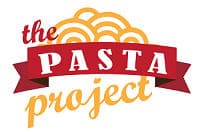

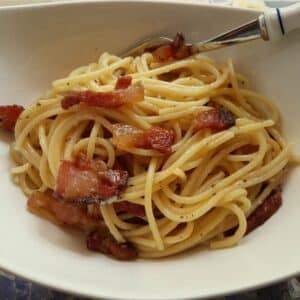
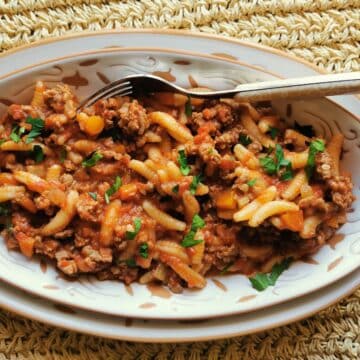
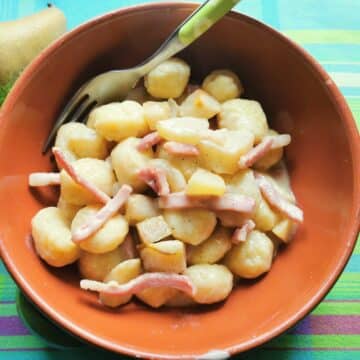
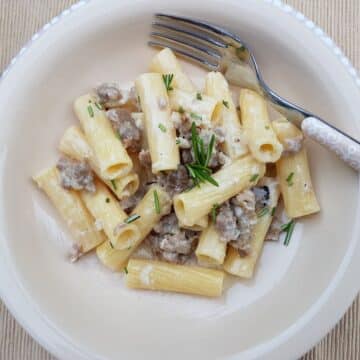

Amy Liu Dong says
I love how easy and delicious this pasta recipe is. Everyone in our house loves it!
Sara Welch says
This was such a quick and easy recipe that does not disappoint! Turned out light yet hearty and delicious; my kind of comfort food, indeed!
Gloria says
Noodles, bacon and cheese, this is my kind of recipe. We love all kinds of pasta dishes. Sounds like a great plan for dinner tonight.
Andréa says
This was such an easy recipe, but also got such a great flavor. Pure and delicious. My family loved it!
Swathi says
Pasta alla gricia looks delicious that cured pork make the dish to another level.
Jean says
I love trying authentic pasta recipes and this did not disappoint. I must admit I used meatless bacon but it did not matter, it was divine.
Marcellina says
I have some guanciale in the fridge just waiting to be used up and your recipe popped up! Can't wait to make this one on the weekend!
Elizabeth says
Such a great classic recipe! Delicious and easy to make.
Gloria says
Pasta cheese and bacon, what could be more delicious than that? All I need is a nice glass of white wine, and this is the perfect date night dinner. Easy to make so I have more time to relax.
Brian Kirchoff says
Made this tonight with pork belly and homemade spaghetti pasta. It was a perfect 5 star, restaurant quality dinner. Thanks so much for the extremely simple but truly wonderful recipe! The history surrounding it was fascinating as well.
Carol says
That looks great